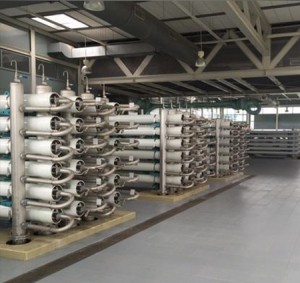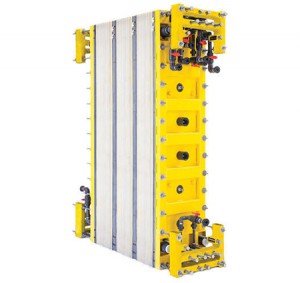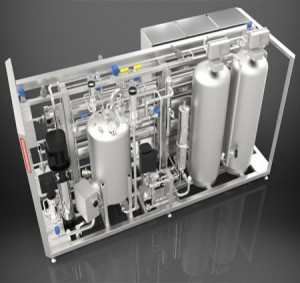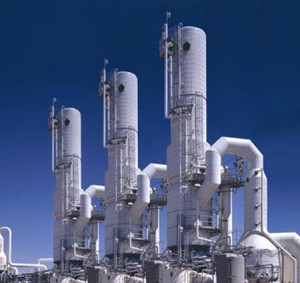SVJPL supplies sea water desalination package that produces water suitable for:
- WHO or EU drinking water
- Irrigation water
- Process water : boiler feed water, cooling water
- Demi or Ultrapure water
Using all types of natural sea water source like:
- Shallow Surface Seawater
- Deep Seawater
- Brackish River Water-cycle
- Beach well Seawater

Reverse Osmosis (RO): is a type of membrane desalination. Here salt water is forced under high pressures through a semipermeable membrane that produces relatively pure water on the downstream side and leaves saline-rich water on the source side. Because membrane cleanliness is crucial to the efficiency of this mechanism, salt water is treated with some initial filters to remove particulate matter. Additionally, after the water passes through the designated membrane, a post treatment generally occurs to to kill any microbes in the water as well as adjustment of the water’s pH back to normal.
- Read More

Desalination is a process by which dissolved salts are removed from seawater or brine water thereby converting it into potable water. Electro-Dialysis reversal (EDR) method involves forcing salt water across a semipermeable membrane that separate the salts from the water leaving a saline solution or brine on one side and a “de-saline” solution (drinkable water) on the other. Easy to control salt removal and product quality by adjusting amount of electricity applied to membrane stack.
- Read More

Multi-Stage Flash Distillation (MSF) is a type of thermal desalination. Salt water is heated under extreme pressures and lead through a series of chambers. The sum of the vaporized water is collected and re-condensed into distilled water. The water that did not vaporize leaves the system with a higher saline concentration than when it entered; this is discarded properly as waste while the distilled water is put into the municipal water supply as drinkable water.
- Read More

Multiple Effect Distillation (MED) is a type of thermal desalination. Salt water is heated under pressure and and forced through a chamber. However, in this system the water vapor from the first chamber is used to heat the water in the next chamber (that is under a lower pressure than the previous chamber). Though this pattern repeats throughout several chambers to increase the efficiency of the overall system, the underlying process is trying to use the heat of condensation to heat the next batch of salt water; this produces distilled water.
- Read More
